Most people trying to solve their performance plateaus are stuck focusing on the wrong things: more miles, more reps, more *stuff*. I know because I was one of them. I wasted years on generic running watches that tracked distance but offered zero actionable intelligence. It wasn’t until I discovered one simple principle that everything changed: true performance isn’t about *what* you track, but *how* you interpret and *act* on the data.

In this guide, I’m giving you the exact playbook for the Garmin Forerunner 970. No theory. Just the battle-tested system that shows you if this is the GPS running watch that unlocks your next level.
- Our brightest AMOLED touchscreen display with button controls, a lightweight titanium bezel and sapphire lens, plus a built-in LED flashlight for greater awareness in the dark during early morning or late-night runs
- Up to 15 days of battery life in smartwatch mode and up to 26 hours in GPS mode for a more complete picture of your training and recovery
- Understand your overall energy efficiency with running economy, and see how much you’re slowing down when your foot hits the ground with step speed loss (HRM 600 monitor required; sold separately); running tolerance helps you understand the real impact running has on your body so you can adjust your training to avoid overload and improve
- Train for an event, achieve a milestone, or improve your fitness with Garmin Coach training plans; these running and triathlon plans are personalized to you and adapt based on your performance and recovery
- Built-in microphone and speaker let you make and take phone calls from your wrist when your watch is paired to your smartphone — and you can even use your smartphone’s voice assistant to respond to text messages and more
My Playbook: What You’ll Master in 7 Minutes
- Minute 1: The flawed assumption that’s secretly sabotaging your training data analysis.
- Minutes 2-4: My ‘Performance-to-Podium’ Framework for achieving athlete performance predictably with the Forerunner 970.
- Minutes 5-6: The three highest-leverage Garmin Forerunner 970 features you can exploit this week that cost $0.
- Minute 7: My hard-won lesson on the #1 mistake that guarantees you waste your investment in advanced metrics.
The Real Problem Isn’t Your Effort, It’s Your Model for Data
You’re working hard, but the results aren’t matching the effort. I get it. The reason is simple: you’re using a broken model for interpreting your fitness data. The “gurus” teach a model that rewards complexity and busywork because it keeps them in business. They want you to believe every minor data point is equally important.
I’m here to give you a new model based on first principles and leverage. My model is about getting disproportionate results from the right inputs, especially when it comes to a powerful tool like the Forerunner 970. Most people think more data equals better training. They’re wrong. It’s about *meaningful* data.
The Core Principle I Learned The Hard Way: Leverage Your Data, Don’t Drown In It
Success isn’t about doing more things; it’s about doing the right things with overwhelming force. We must stop thinking about our inputs (miles, hours) and start obsessing over our outputs (results, Training Readiness, peak athlete performance). Here’s the mental model I use:
Effort vs. Leverage: My Personal Operating System for Fitness Tech
| Metric | The Grinder (99% of People) | The Strategist (My Approach with Forerunner 970) |
|---|---|---|
| Focus | Inputs (Hours, raw mileage, generic stats) | Outputs (Results, Training Readiness, HRV Status, Leverage, Simplicity) |
| My Take | This is the slow, painful path to burnout and injury. I’ve been there. | This is the only way to achieve exponential growth and win long-term by maximizing performance insights. |
Reading is one thing, but seeing it is another. This video was a game-changer for me in understanding this concept and how a watch like the Garmin Forerunner 970 fits into that. Watch it before moving on.
My ‘Performance-to-Podium’ Framework: Your Blueprint for Asymmetric Returns with the Forerunner 970
After years of trial and error, I’ve distilled everything down to this simple, three-part framework. It’s designed for maximum leverage and minimum waste, especially when you’re equipped with a powerful tool like the Garmin Forerunner 970. This is the exact system I use in my own training, focusing on the value proposition of every feature.
Part 1: Master Your Metrics – The Forerunner 970’s Core Strength
This is where you identify your single greatest point of leverage: understanding what the Forerunner 970 is actually telling you. Most people just glance at their watch. I believe that’s a recipe for mediocrity. Be world-class at interpreting your advanced metrics. Ask yourself: ‘What is the one metric that, if I truly understood it, would render all my other training confusion irrelevant?’ That’s your unfair advantage.
The Forerunner 970 shines with its suite of performance insights. We’re talking beyond basic steps. We’re talking Training load, Recovery time, VO2 Max, HRV Status, and Training Readiness. These aren’t just numbers; they’re the pulse of your current physical state. The wrist-based heart rate sensor, coupled with the Pulse Ox sensor, provides critical data for these calculations. Data accuracy here is paramount.
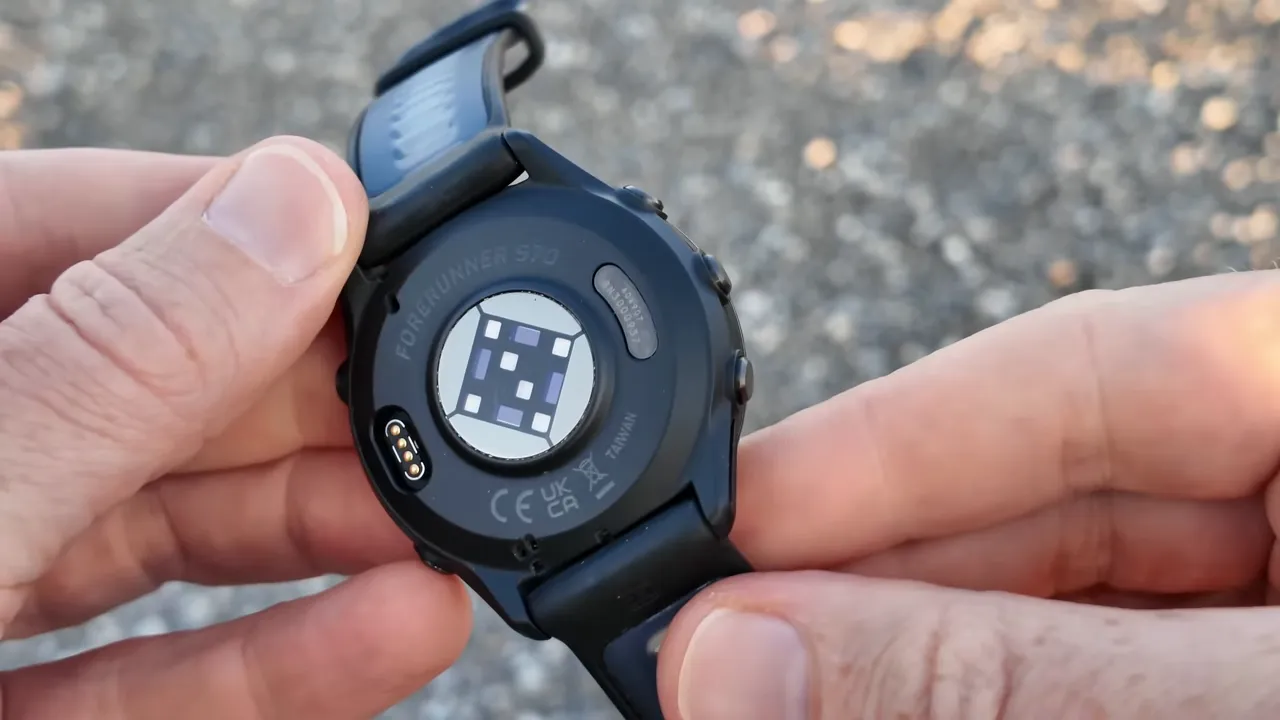
My Action Step for You: Decode Your Daily Readiness
Your first move: stop ignoring the Morning report. This isn’t just a fancy display; it’s the Forerunner 970‘s intelligence distilled. It gives you your Training Readiness score, based on sleep tracking, recovery time, HRV Status, and recent training load. I check this every morning. If it’s low, I adjust my daily suggested workouts or take a rest day. Period. Don’t push through a red light the watch is giving you. That’s how you get injured or overtrained.
Key Metrics: What They Mean & Why They Matter on Forerunner 970
| Metric | What it Tells You | My Action Rule |
|---|---|---|
| Training Readiness | Your daily capacity for high-effort training, considering HRV Status, sleep tracking, recovery time. | Green: Push hard. Orange: Be smart, maybe a light Zone 2 run. Red: REST or active recovery. |
| Training Load | The cumulative stress on your body over the last 7 days. | Keep it productive, not excessive. Follow Garmin’s recommendations for optimal athlete performance. |
| Recovery Time | Estimated time until you’re fully recovered from your last workout. | Respect it. Don’t schedule another intense session until this clears. It prevents burnout. |
| Stamina Tracking / Real-time Stamina | How much energy you have left in real-time during an activity. | Use it to manage efforts in long-distance running or ultra runners events. Don’t redline too early. |
Part 2: Optimize Your Execution – Leveraging the Forerunner 970’s Tools
Once you have your advantage (data understanding), you need to apply it at scale. Volume negates luck. The more shots on goal, the more you score. But it has to be the right kind of volume. Here’s the system I created to build a repeatable process for long-distance running and trail running, all facilitated by the Garmin Forerunner 970.
💡 My Pro Tip: Everyone obsesses over quality, but they forget that quantity is the fastest path to quality. Your 100th attempt will be infinitely better than your first. Your 100th run with accurate data from your Garmin Forerunner 970 will teach you more than 10 “perfect” runs with bad data. My advice? Get to the 100th attempt as fast as humanly possible, learning from every data point.
The Forerunner 970 brings an AMOLED display to the table, making mapping capabilities vibrant and easy to read even in bright sunlight. This is crucial for trail running and advanced navigation.
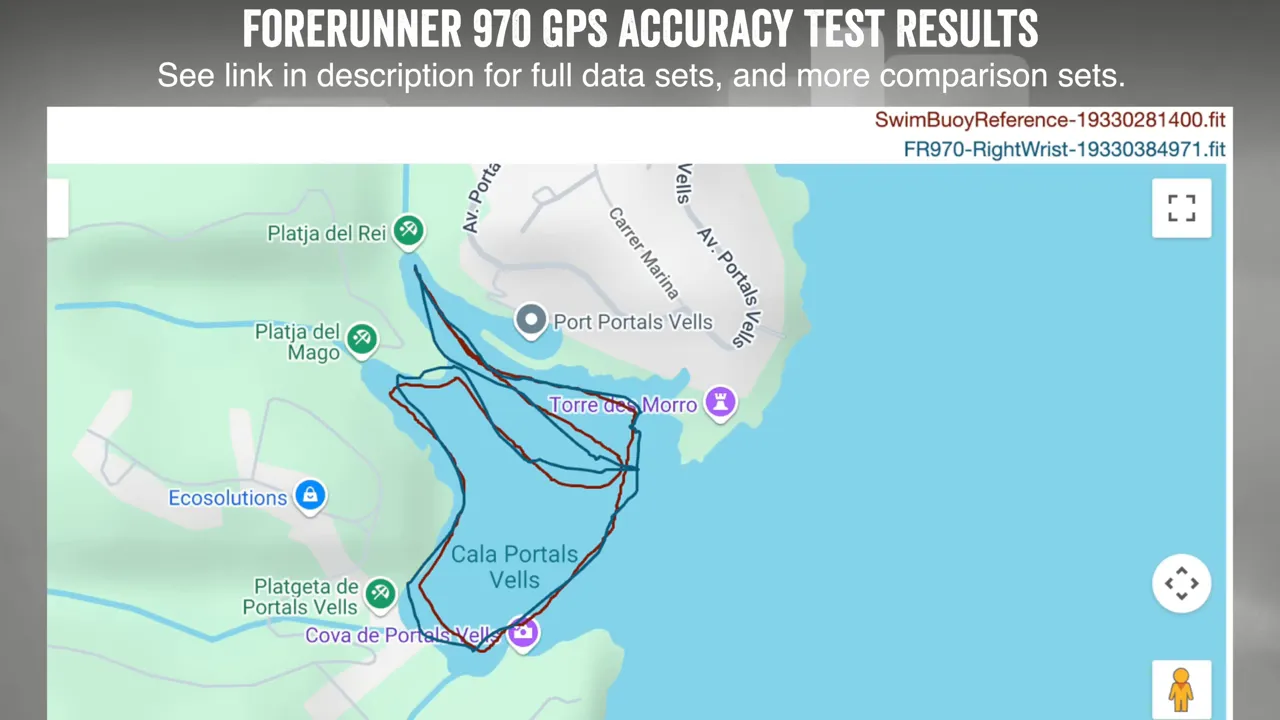
The multi-band GPS ensures superior GPS accuracy, even in challenging environments like city canyons or dense forests. This means your running dynamics and PacePro guidance are built on solid ground. GPS running watches are only as good as their signal, and the 970 delivers.
Navigation & Mapping: Forerunner 970 Advantage
| Feature | Benefit for Runners/Triathletes | My Assessment |
|---|---|---|
| AMOLED Display | Crisp, clear, colorful on-device maps and data fields. | Game-changer for readability, especially for course guidance. |
| Multi-band GPS | Enhanced GPS accuracy in difficult areas (e.g., mountains, cities). | Reduces “GPS drift” and ensures reliable distance/pace for long-distance running. Critical for precision. |
| ClimbPro | Detailed incline/decline information for climbs on pre-loaded courses. | Essential for ultra runners and trail running. Helps manage effort. |
| Up Ahead Feature | Shows upcoming course points (aid stations, turns). | Great for long-distance running and races, anticipating needs without constantly checking a map. |
Beyond running, the Forerunner 970 supports sport profiles for open water swimming, cycling metrics, and even strength training profiles. This makes it a true all-around tool for triathletes and serious fitness enthusiasts. The customizable data fields allow me to see exactly what I need at a glance, eliminating distractions.
Part 3: Maximize Your Longevity – The Ecosystem & Durability
The best watch in the world is useless if it breaks or if the ecosystem doesn’t support your long-term goals. This is about protecting your investment and ensuring continuous athlete performance growth.
The Forerunner 970 boasts impressive battery life, especially for an AMOLED display watch. While it won’t match some monochrome Fenix models, it easily handles multi-day events for most ultra runners and triathletes. Its durability is top-notch, with Gorilla Glass DX protecting the screen and water resistance suitable for swimming. The weight is light enough to disappear on your wrist during long efforts.
Battery Modes: Balancing Power and Performance on Forerunner 970
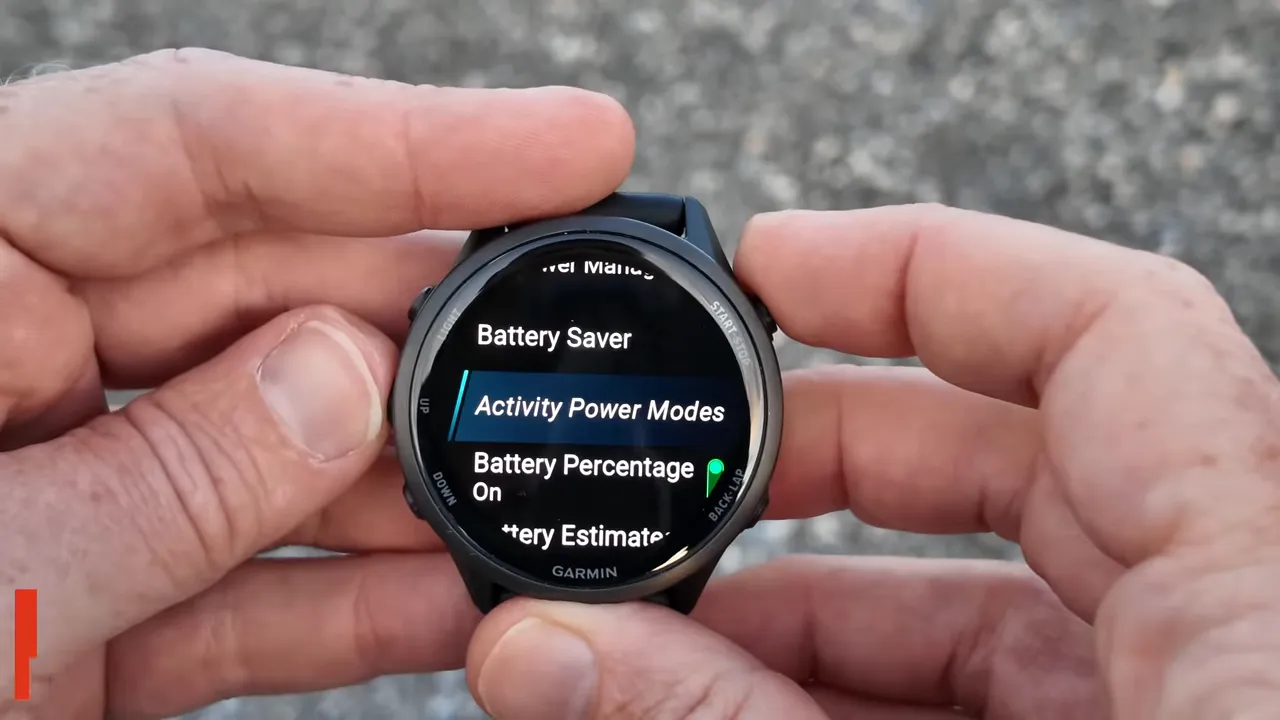
| Mode | Estimated Battery Life | My Use Case |
|---|---|---|
| Smartwatch Mode | Up to 14 days | Daily wear, general smartwatch features, sleep tracking, Body Battery. |
| GPS Only | Up to 30 hours | Most long-distance running, marathons. Solid for single-day efforts. |
| All-Systems GPS + Music | Up to 15 hours | Race day with tunes, for when motivation needs a boost. |
| UltraTrac GPS | Up to 60 hours | Multi-day trail running or ultra runners events where maximum battery life is critical. Lower GPS accuracy, but still tracks. |
The Garmin Connect platform is the backbone of the Forerunner 970. This app integration is where all your data comes together, providing historical context, training status, workout suggestions, and even a race predictor.
The connectivity via Wi-Fi and Bluetooth ensures smooth data transfer. Don’t just log data; *analyze* it within this powerful ecosystem. The software updates are consistent, bringing new features like Jet Lag Adviser and refining existing ones like Body Battery and Stress tracking.
The convenience features are a bonus, not the main event. Music storage and Garmin Pay are nice to have, but you’re not buying this watch for those. You’re buying it for the athlete performance tools. The built-in flashlight, however, is a surprisingly useful feature for early morning or late-night runs.
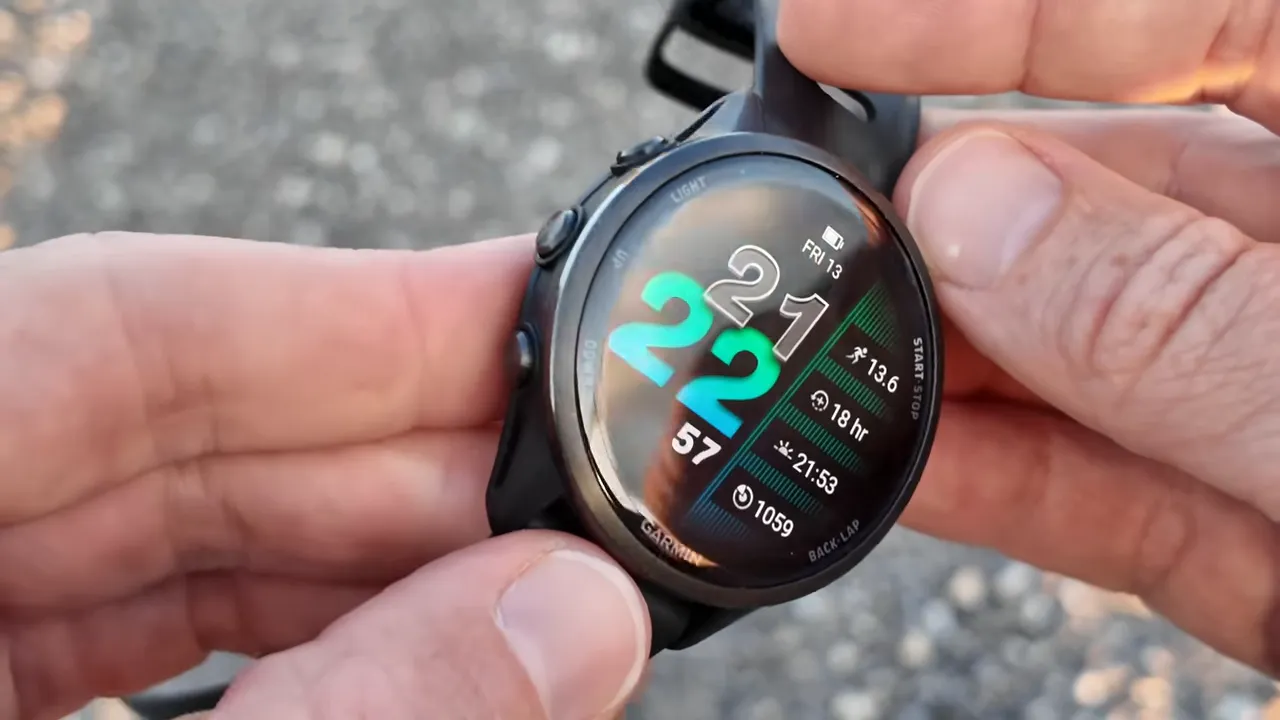
New running features: what they are and how they work
Garmin built a suite of new running metrics into the Forerunner 970 aimed at more accurate load/tolerance modeling and running economy analysis. They’re interesting on paper, and in some cases quite useful in practice—yet a couple of them need refinement in my opinion.
Running Load Factor
Running Load Factor is intended to capture the actual stress of a run beyond pure mileage. Imagine a 10K: a flat easy 10K and a hard 10K downhill mountain race might both show 10K distance but the biomechanical load can be wildly different.
Running Load Factor attempts to quantify that additional impact or stress and convert it into an “effective distance” number—what felt like a 10K might read like an 18–20K if it had heavy intensity or steep elevation. In my testing across flat and trail runs, the impact load factor tracked closely with how my legs felt, and this is one of the clearest successes in the new feature set.
Running Tolerance
Running Tolerance uses the running load factor to estimate how much load your body can tolerate. It shows your recent seven-day kilometers (weighted toward recent sessions), a tolerance value, and compares that to actual weekly volume. In my case I was doing 70–100 km/week recently, yet the watch suggested a tolerance of around 45 km/week.
That points to some conservatism or slow scaling in the tolerance algorithm; I ran a 50K on one of those weeks and then ran again the next day without issue, which suggests the tolerance metric needs to adapt more quickly for high-volume runners.
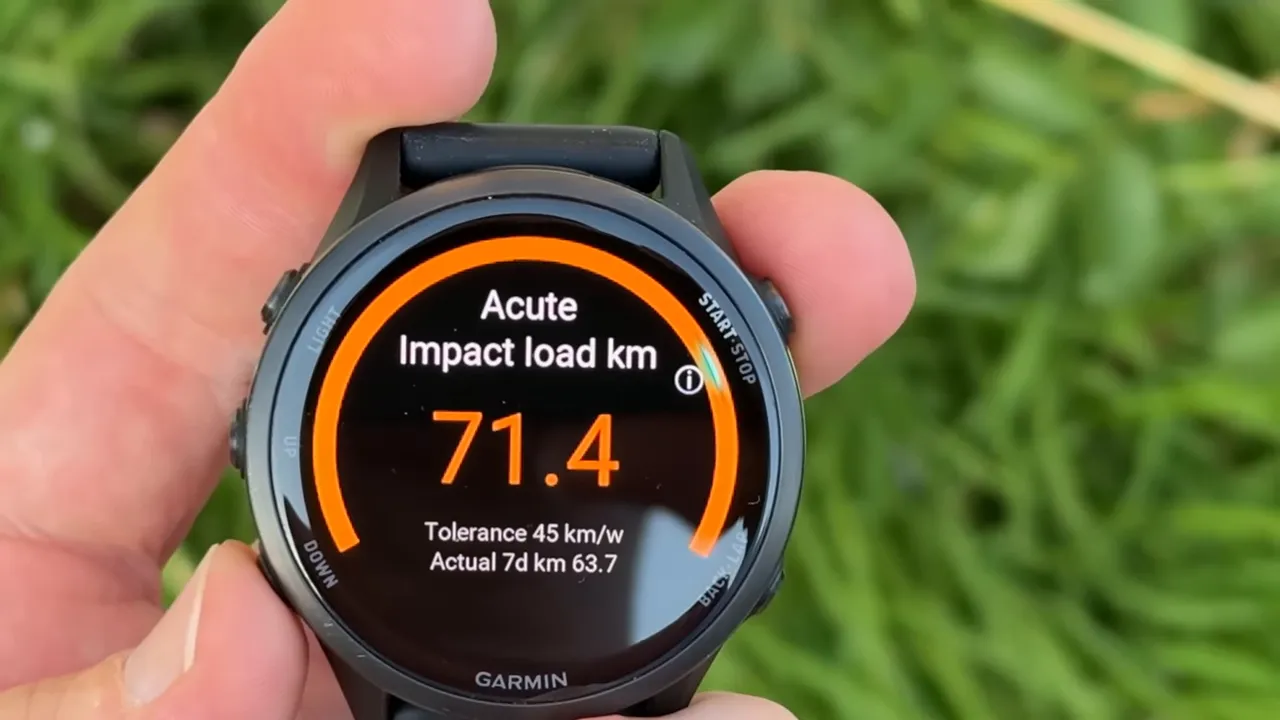
Step Speed Loss & Running Economy
Both Step Speed Loss and Running Economy require Garmin’s new HRM-600 chest strap to get precise ground-impact metrics. Step Speed Loss estimates the percentage of speed lost at ground contact—an efficiency metric rolled into the Running Economy score. Running Economy, however, took me about 110–115 km of running before the watch produced a reliable value.
My biggest critique: the Step Speed Loss calculation favors slower, smoother runs and effectively ignores faster intervals, obvious interval sessions, and trail runs with elevation. The result can push athletes to “run slower to look better” rather than providing actionable coaching to improve efficiency for speed.
I’ve asked Garmin for clarification and practical advice on using these metrics to actually get faster; the current response has been vague. In short: interesting tech, but the coaching translation needs work.
What The ‘Gurus’ Get Wrong About the Garmin Forerunner 970
The internet is full of bad advice on GPS running watches. Here are the three biggest lies I see, and what I do instead with the Garmin Forerunner 970. For a deeper dive on this, the following video is a must-watch.
| The Lie I See Everywhere | The Hard Truth I Learned | Your New Action Plan with the Forerunner 970 |
|---|---|---|
| ‘You need the most expensive watch for basic running.’ | You need the *right* watch for *your* goals. The Forerunner 970 has a price point that demands serious performance. | Evaluate your upgrade decision based on the value proposition of its advanced metrics, not just its price. If you’re a beginner, a Forerunner 55 or 265 might be enough. |
| ‘All GPS watches are equally accurate.’ | This is a dangerous lie. Multi-band GPS and high-quality sensors like the altimeter and barometer make a massive difference. | Trust the Forerunner 970‘s superior GPS accuracy and integrated sensors for precise running dynamics and grade-adjusted pace. Don’t compromise here. |
| ‘More features mean a better watch.’ | More features without *utility* are just noise. Focus on what directly impacts your athlete performance and recovery time. | The Forerunner 970 bundles essential performance features like PacePro and Real-time stamina. Ignore the fluff; master these core tools. |
Garmin Forerunner 970: Competitive Analysis

Let’s be real. You’re not buying a Forerunner 970 in a vacuum. You’re weighing it against other options. This is my direct assessment, based on real-world use, not spec sheets.
Forerunner 970 vs. The Field: Where it Dominates
| Feature | Forerunner 970 | Garmin Fenix 7X / Fenix 8 | Coros Pace 3 / Vertix |
|---|---|---|---|
| Display | Brilliant AMOLED display (my preference for clarity) | MIP (Fenix 7), potentially AMOLED (Fenix 8). More rugged. | MIP (Pace 3), AMOLED (Vertix 2 Pro). |
| Weight / Comfort | Significantly lighter, perfect for long-distance running. | Heavier, bulkier, more for extreme adventurers. | Lighter than Fenix, but not as sleek as FR970. |
| GPS Accuracy | Top-tier Multi-band GPS, incredibly reliable. | Excellent Multi-band GPS, on par with FR970. | Very good, but some report slight lag in challenging environments. |
| Advanced Metrics | Leading with Training Readiness, HRV Status, Real-time stamina. | Similar suite, with more outdoor/adventure-specific. | Strong, but Garmin’s ecosystem feels more refined for athlete performance. |
| Price Point | High, but justifiable for serious fitness enthusiasts. | Higher still, if you need the extreme durability and niche adventure features. | Generally lower, offering strong value. |
For dedicated long-distance running, trail running, and triathletes who prioritize lightweight design, an exceptional display, and the most refined advanced metrics, the Forerunner 970 is a monster.
If you’re comparing it to the Fenix series, ask yourself if you *really* need the bomb-proof exterior or if you’re just paying for features you’ll never use. For pure performance data, the Forerunner 970 often beats its bulkier cousins on user experience and comfort.
Forerunner 970: The ‘Investment vs. Return’ Matrix
Every piece of gear is an investment. You need to know your expected return. The Forerunner 970 is not a cheap watch, so let’s break down if the price point delivers on its value proposition.
Is the Forerunner 970 Worth It? My Framework
| Investment (Cost / Effort) | Return (Benefit / Value) | My Verdict & Reasoning |
|---|---|---|
| High Price Point | Elite-level advanced metrics, unmatched GPS accuracy, vibrant AMOLED display, comprehensive ecosystem for athlete performance. | Justified for serious long-distance running, ultra runners, triathletes who will utilize the data to drive Training Readiness and optimize recovery time. |
| Learning Curve for Data | Deeper understanding of Training load, HRV Status, Running dynamics, PacePro. | If you commit to learning, you gain an unfair advantage in preventing injury and maximizing training adaptations. This is where you get your money’s worth. |
| Daily Wear (Comfort/ Durability) | Lightweight weight, strong Gorilla Glass DX, extensive battery life. | Excellent for daily wear, negating the need for a separate casual smartwatch. The Morning report becomes a daily habit, enhancing user experience. |
| Ecosystem (Garmin Connect) | Long-term training status analysis, workout suggestions, event widget, safety and tracking. | This is where Garmin solidifies its value proposition. It’s not just a watch; it’s a coach on your wrist, providing performance insights over weeks and months. |
- Our brightest AMOLED touchscreen display with button controls, a lightweight titanium bezel and sapphire lens, plus a built-in LED flashlight for greater awareness in the dark during early morning or late-night runs
- Up to 15 days of battery life in smartwatch mode and up to 26 hours in GPS mode for a more complete picture of your training and recovery
- Understand your overall energy efficiency with running economy, and see how much you’re slowing down when your foot hits the ground with step speed loss (HRM 600 monitor required; sold separately); running tolerance helps you understand the real impact running has on your body so you can adjust your training to avoid overload and improve
- Train for an event, achieve a milestone, or improve your fitness with Garmin Coach training plans; these running and triathlon plans are personalized to you and adapt based on your performance and recovery
- Built-in microphone and speaker let you make and take phone calls from your wrist when your watch is paired to your smartphone — and you can even use your smartphone’s voice assistant to respond to text messages and more
Frequently Asked Questions About the Garmin Forerunner 970
Is the Garmin Forerunner 970 worth the price point for a casual runner?
Simple. No. The reason is the Forerunner 970 is a precision instrument for serious athlete performance, packed with advanced metrics, mapping capabilities, and real-time stamina features that a casual runner won’t fully utilize.
Most people overcomplicate this. All that really matters is your specific training goals. If you’re just jogging for fitness, a more basic model will save you money and still provide great GPS running watch functionality.
How accurate is the GPS and wrist-based heart rate on the Forerunner 970?
From my experience, the Garmin Forerunner 970 delivers elite GPS accuracy thanks to its multi-band GPS. It locks on fast and holds solid, even in challenging environments where other watches struggle. For wrist-based heart rate, it’s excellent for continuous monitoring and general training load.
However, for high-intensity intervals or critical lactate threshold tests, I still recommend pairing it with an external HRM-Pro chest strap for absolute precision. The watch supports ANT+ and Bluetooth connectivity for external sensors.
Can the Forerunner 970 replace a dedicated adventure watch like a Fenix?
This is a common upgrade decision point. The Forerunner 970 has robust mapping capabilities, ClimbPro, and excellent durability. For most trail running and long-distance running adventures, yes, it’s more than capable. It has the altimeter, barometer, and compass you need.
However, if your definition of adventure involves extreme conditions, multi-week expeditions without charging, or a greater need for pure ruggedness over a sleek AMOLED display, a Fenix or an Instinct model still holds a niche. For the vast majority of fitness enthusiasts, the Forerunner 970 hits the sweet spot for a do-it-all performance watch.
How effective are the daily suggested workouts and race predictor?
These features are where the Forerunner 970 truly earns its stripes, assuming you feed it consistent data. The daily suggested workouts adapt based on your Training Readiness, Body Battery, and past training load, guiding you towards optimal athlete performance.
I’ve found them incredibly useful for structuring my week. The race predictor, while not a crystal ball, provides a realistic benchmark for your potential, especially when combined with the visual race predictor in Garmin Connect. It’s a powerful motivational tool for long-distance running events.
What about smartwatch features and daily use?
The Forerunner 970 is a fitness-first device, but its smartwatch features are solid. The AMOLED display makes smart notifications and text responses (Android only) crisp. Garmin Pay is convenient for post-run coffee. Music storage means leaving your phone at home for runs. Its user experience with both touchscreen navigation and button controls is fluid.
The Morning report and Body Battery tracking are excellent for overall health insights, including sleep tracking and stress tracking. It’s a capable everyday watch that excels when you start moving.
Final Words: Stop Thinking, Start Doing.
I’ve given you the entire playbook. My model, my framework, my action plan for the Garmin Forerunner 970. The only thing separating you from the result you want is execution.
This watch is a powerful tool, an undeniable advantage if you understand and utilize its advanced metrics for your athlete performance. Its AMOLED display, multi-band GPS, and comprehensive training load features are designed to give you an edge.
The opportunity to elevate your training is there. The question is, what are you going to do about it?
References
- Garmin Forerunner 970 In-Depth Review: Brillance at a Cost?
- Garmin Forerunner 970 review: Going the distance – Android Authority
- Garmin Forerunner 970: Running Watch Test and Review
- Garmin Forerunner 970 review: A runner’s dream with one big caveat
- Garmin Forerunner 970 review: the new benchmark for running …
Last update on 2026-01-03 / Affiliate links / Images from Amazon Product Advertising API


